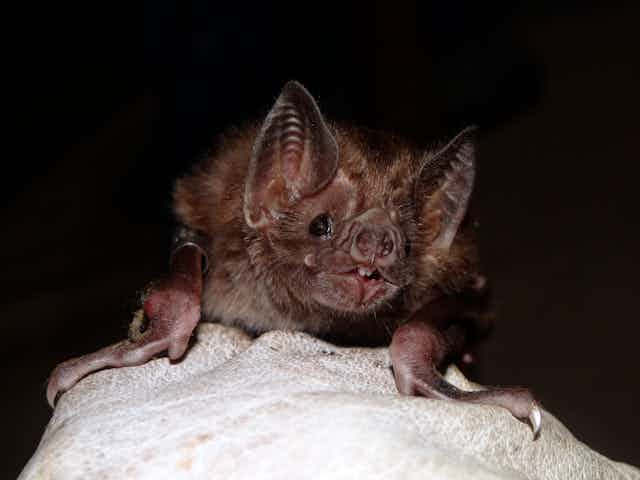During the darkest hours of the night, they fly and hunt for prey. They live in caves and ruined buildings and have to drink blood every night to survive. They can bite with their fangs without you even noticing. No wonder these bats are called vampires. Yet when it comes to coping with these bloodthirsty creatures, the good news is that a breakthrough could finally be in sight.
Vampire bats only live in one part of the world – which is a relief, unless you happen to be in Latin America. They exist between northern Mexico and northern Chile, and they are a major problem. They are now the main cause of human deaths from rabies in the region.
Between 2009 and 2013, vampire bats bit 20,000 people in Peru alone, according to the country’s health minister; and in communities across the Amazon, where bites are commonplace, the rate of rabies infection could be almost as high as 1% per year. At least 12 children were killed by rabies earlier this year in a single outbreak.
Meanwhile, farmers lose a few thousand livestock every year – or perhaps many more, since the worst-hit remote communities almost certainly under-report infection rates. We found that about 70% of farms in the Andes have at least one animal bitten regularly.
The virus is also steadily expanding into areas that were historically free of the disease, as we discovered through our recent work in Peru. As many as 12 new governmental districts become infected per year on average, which has doubled the number of outbreaks at national level. We found that the virus invades new areas in waves that advance at between 10km and 20km per year. The advance is stalled only by tall mountains that rise above the altitudes where bats thrive.
We don’t know what has sparked the spread of rabies into new territories, but one possibility is that bats nowadays have access to more livestock and man-made structures for roosting. This could be making it possible to allow the disease to spread by connecting previously isolated populations.

Breaking the waves
We are pleased to report that the waves of rabies in bats move quite predictably. This makes it possible to forecast in some areas when and where the virus is likely to strike next. With this information, which has not been known until now, the authorities in Peru will have the option of anticipating their arrival, allowing them to vaccinate the animals and people before deaths begin.
This would be a big shift from the norm, where livestock and people typically get vaccinated only after an outbreak has been declared. Assuming the virus behaves in the same way in other countries, the same approach could be adopted across Latin America.
Having said that, vaccinating animals and people does nothing to prevent the spread of the virus. It only saves the recipients of vaccines from dying. If you want to stop the virus, you have to tackle the source of the transmission – the bats themselves.
Since the 1970s, Latin American governments’ answer has been bat culls. Yet there is no convincing evidence that this has made a substantial difference, and it may even have been counterproductive – by mainly targetting adult bats that are already immune and provoking bats to disperse between roosts, it might have hastened the spread of the disease.
Governments across the world have been very successful at using mass-vaccination programmes to curb rabies in dogs and other key carrier species such as foxes and raccoons, but this has never been attempted on a large scale with vampire bats. This is despite the fact that an effective vaccine is now an option. Researchers in Mexico and Brazil have shown that you can prevent bats in captivity from catching rabies by giving them an orally transmitted gel that has been impregnated with the vaccine.

Whether this would work with wild bats is another matter, of course. All the biological and ethical challenges inherent in any wildlife vaccination campaign are likely to apply, not to mention the logistical challenge of remote landscapes in the Andes and Amazon.
But our findings on the way that the disease spreads in waves among bats could change the game here, too: rather than seeking to eliminate rabies from all vampire bats in endemically infected areas, we could try to halt the spread into new areas instead.
It is also important to galvanise interest in bat vaccination among public health officials and conservationists for other reasons. As well as rabies, bat populations are thought to spread other diseases such as Ebola and white-nose syndrome in other parts of the world.
Given that vampire bat rabies has a major impact on human lives and livestock, and we now have both an effective vaccine and a better understanding of how it spreads, we believe this is the right starting point to inspire a new generation of disease control strategies for bats. It is surely something we could all get our teeth into.

